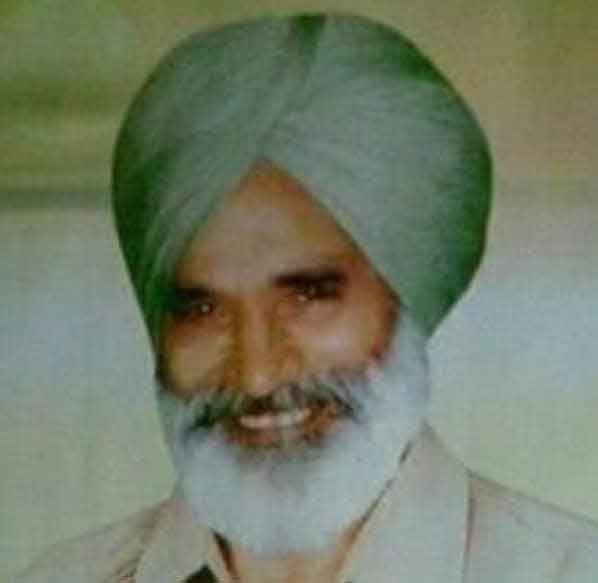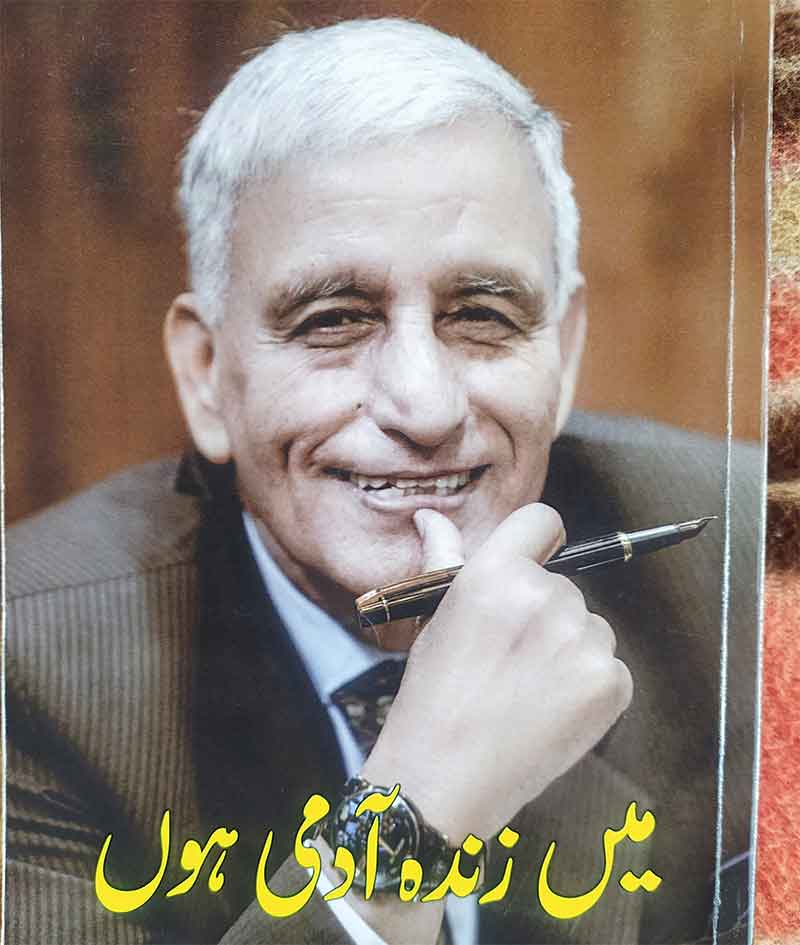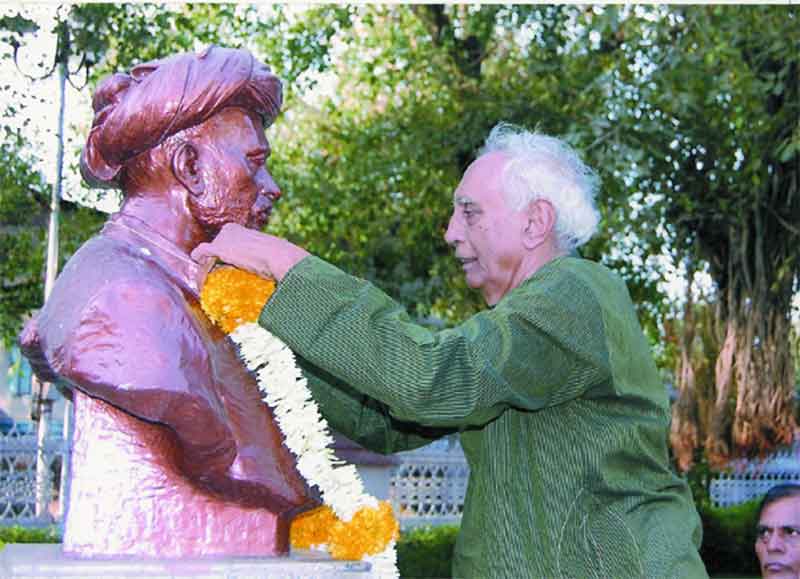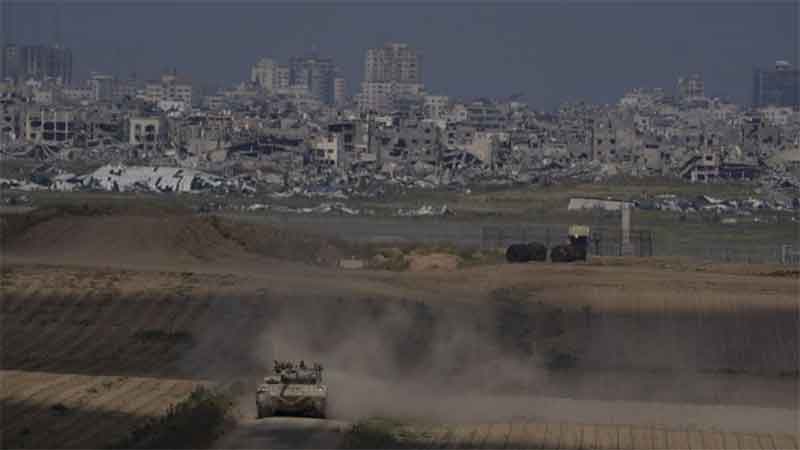
On October 30th we commemorate the 17th death anniversary of late Shamsher Singh Sheri. Shamser Singh Sheri is arguably the most defining figure of the Communist Revolutionary of Naxalite movement in Punjab, torch-bearer of the Communist Revolutionary camp or mascot against revisionism. His name is still inscribed in letters of gold by revolutionary ranks.
I hold Sheri in great esteem for persisting with the path of new democratic revolution and path of peoples war, recognising that Punjab was still semi-feudal and confronting revisionist currents at every stage of his life. From the darkest waters, he could rise like a phoenix from the Ashes, to shimmer spirit of revolution and give a blow to revisionism at it’s strongest point.His life was a living illustration that no force could extinguish the force of Marxism-Leninism –Mao Thought.Sheri grappled every problem with surgical skill. He prescribed the unity of Communists not only of India but firmly advocated the unity of the Communists of the whole world also. He labelled world imperialism as the common enemy. His life story was one of waging a death –defying battle against all forces of reaction and all obstacles to revolution. Till his last breadth he challenged all economist tendencies within Punjab.
A unique characteristic of Shamsher Singh ‘Sheri‘, was his relentless devotion to build and the world revolutionary movement. Demonstrating untold tenacity he supported the revolutionary struggles of Peru, Nepal, and Philippines and anti imperialist struggles in Iraq, Palestine and other countries and the struggles being fought against the rulers in imperialist countries themselves. At every juncture he confronted with an iron and the politics of class compromise and class collaboration.
On the whole, Com. Sheri was a diverse figure of the Naxalite movement, who devoted every ounce of his energy to the liberation of workers and peasants. Even at the age of 63.his enthusiasm was as ripe as the freshest of mangoes. At no juncture did he relent before the problems of the revolutionary movement or submit to state.
The resurgence of movements in organising dalit agricultural labour community was inspired by Sheri. The spark of the Communist Revolutionary movement illuminating Punjab has deep roots in the contribution of Sheri. The shaping of his life as a Communist would make a book itself.
Life Story
Comrade Sheri was born in village Khokhar Kalan, in the Lehra Gaga area, subdivision Sunam, district Sangrur, Punjab. This area was a centre of the armed Pepsu Tenancy movement under the leadership of the then Red Party. Comrade Teja Singh Swatantara, the most popular veteran leader of the communist Movement of Punjab and founder of the Red Communist Party, though not a native of this area, worked for a long time in this area and the people of this area considered him as their own. The great martyr Udham Singh was also a native of this area (Sunam), who took revenge for the bloody massacre of Jallianwalla Bagh on April 13, 1919 by shooting down General Dyer in the Kaxton Hall of London after a full twenty-one years. The Sikh General, Akali Phoola Singh, known as true, sincere, expert in warfare and great hero was also a native of village Lehal Kalan of this area, who, despite being an army commander of Maharaja Ranjeet Singh, gave lashes to Maharaja Ranjeet Singh at the Akal Takhat, the highest religious seat of the Sikhs. None can forget comrade Rahi of village Ugrahan, who, despite his blindness devoted all his life to the service of the people and worked as a courier of the Red communist Party. Comrade Sheri has not only extended the revolutionary heritage of this area, but scaled it to greater heights.
Comrade Sheri was born in the end of 1942. He was sixty three years old. He belonged to a middle class peasant family. He had six brothers and three sisters. Comrade Sheri was the youngest of all. He was still three or four months old when his father died. He along with an elder brother was married in 1957. At that time he was about fifteen years old. His wife Harbans Kaur, village Bhullran, district Sangrur was barely nine years old. Due to the custom of child marriage prevalent in Punjab at that time, he was bound by the bonds of marriage. But the real beginning of his family life started only a little before he went underground. In the mid 1980s, during his underground life, two sons were born to his wife. The elder Krantipal Singh is a student of B.A. final and the younger Sachinderpal Singh is a student of B.Sc. economics (Honors). It is remarkable that inspite of facing the conditions of severe repression and comrade Sheri‘s staying out of home for 35 years, his wife unflinchingly stood by him till the end with repression and social pressure at an absolute pitch.
Com. Sheri passed his middle class examination in 1957 privately and got coaching from Paras Raj academy Sunam. He cleared his matriculation from Lehragaga. After matriculation he joined Mahindra college Patiala for graduation. He did his B.A. part 2 from Mahindra College. Right at the outset com. Sheri had a keen interest in literature. During this period he composed several songs and poems which were published in the college magazine. He was a good player of Kabaddi. He fractured his leg while playing Kabaddi. Because of financial constraints and un-satisfactory treatment he developed a disability in the leg. Due to an open clash with goonda elements in Mahindra college he had to migrate to Ripudaman college Nabha in 1963. He completed his B.A. final from this college in 1964. During this period he came into contact with Darshan Bagi the first general secretary of the PSU and prominent student leader of Punjab and other leaders. After that he jumped into the student movement in Punjab earnestly.
It was the period when the national liberation struggles the world over were shimmering at a crescendo against the world imperialist system and the Great Proletarian Cultural Revolution was at a helm that Sheri not only joined the revolutionary movement but also scaled the leading ranks of the student movement of Punjab. During this period he got admission in the govt. college Ludhiana and Khalsa college Amritsar. He was elected the secretary of the district committee Amritsar of the Punjab Students Union in Aug. 1967. At the time of the election to the state committee in Oct. 67 he was elected as propaganda secretary of the state. After the arrest of Darshan Bagi, the first general secretary of PSU in Dec. 1968 under PDR, he was elected acting general secretary the same year. When the first manifesto and constitution of the Punjab Students Union was adopted in July 1969 he was working as the general secretary of the PSU.
When the Naxalite Movement sprung up in May 1967 under the leadership of com. Charu Majumdar , Sheri upheld the formation of CPI (M.L.). Following the decision of party he went under ground in 1969-70. He was major proponent of line protracted people’s war ,in theory and practice In the aftermath of fake police encounters of some senior comrades in Punjab, he was elected as a Punjab state committee member of the CPI (M.L.). Sheri was famous for an action that eliminated Sikander Singh, DSP Patiala, — known as one of the most daring military actions in history of the Naxalite movement of Punjab in the period of 1969-70. After that Com. Sheri was associated with all the military actions in the districts of Patiala and Sangrur.
Although he faced a warrant for a prolonged period during his student life, yet during these military actions Com. Sheri was consistently hounded by the police. Severe repression was launched on the people of his village, his friends, relatives, his wife, his brothers and his connections in the revolutionary movement. If ever any native of village Khokhar was found by the police it considered an imperative task to torture him. His wife Harbans Kaur and his sister-in-law Harbans Kaur were both imprisoned for about three months. They were tortured. His brothers Ranjit and Harbans Singh etc. were also tortured. His friends and about 80-90 young men were selectively tortured. His wife was prevented from cultivating the land and his landed property was attached by the Govt. After the change in situation his wife courageously began cultivating the land. It compelled the govt. to restrain it’s actions.. Even today his land is attached in the govt. records. His family is debarred from selling the land, obtaining any loan, obtaining get any power connection, etc.
After the disintegration of the CPI (M.L.) in Punjab Sheri joined the ranks of Punjab Revolutionary Co-ordination Commitee in 1974 which later merged into the Unity Centre of Communist Revolutionaries in 1976. Sheri served as a member of the regional committee of this organization from 1974-82. The line of the UCCRI (M.L.) did not abide with him. Due to upholding the revisionist Three World Theory the major part of the central leadership deviated to the revisionist line, though its minority rejected this revisionist theory. Com. Sheri was one of the important architects of confronting this revisionist assault. He adopted a clear cut position on this and other issues. In Nov. 1983 a new group the Revolutionary Communist Centre of India (Marxist Leninist) was formed under Com. Sheri became the founder secretary of this group.
When in May 1984 the Revolutionary International Movement was founded, the RCCI (ML), under his leadership, upheld it. Two revisionist trends emerged in the communist revolutionary movement of India including Punjab. One trend propounded the path of socialist revolution and general insurrection. This trend upheld participation in parliamentary institutions. It characterized India as economically and politically independent or partly independent from it. The second trend propagated India as the sum total of the national revolutions.Com. Sheri raised his bold voice against these two revisionist trends and firmly upheld the theory of new-democratic revolution and protracted people’s war.
The tenacity Sheri exhibited when Communist regimes collapsed in 1989 and USSR was dissolved in 1991 was admirable, who with immaculate skill confronted the counter –revolutionary wind, to ignite the mantle of revolution. He played a most formidable role in organising protests condemning the arrest of late Chairman Gonzalo in September, 1992, with most powerful protest rallies organised.
After the second conference of RCCI (M.L.) in 1992 this organization was split into two groups, RCCI (Maoist) and RCCI (MLM) in 1995. Sheri remained secretary in the 1996 and 2002 conferences of the RCCI (Maoist). Under his leadership the RCCI (Maoist) and MCC were unified in Jan., 2003. After this unification the MCC was named as the MCCI. He was elected a member of the central committee of the MCCI before unifying with the CPI (ML) People’s War. In September, 2003 Com. Sheri played a significant role in the unity between the Organizing Committee, RCCI (MLM) and MCCI. In the capacity of central committee member of MCCI with great resolve he played a role in preparing the unity documents released after the unification. n the first meeting of the two central committees held on 21 Sept.2004, he was elected a central committee and polit bureau member of the CPI (Maoist).
Sheri’s efforts to resolve the mutual killings or clashes between the erstwhile Maoist Communist Centre of India and the CPI (ML) Peoples War is commendable. He also exhibited supreme spirit of service or tenacity when battling the most tortuous of paths of India in 2004-05,inspite of state repression at a helm and being plagued by malaria .
Memorials
In the commemoration meeting on November 13th in village Khokar Kalan in 2005 after his death, speakers representing organizations of all trends with the Communist revolutionary camp summarised his leading role in the projecting of the theories of Marx, Lenin and Mao, his unflinching commitment to the path of Naxalbari, in bridging the gap between Communist Revolutionary trends. and in serving the Indian Communist Movement. What was most memorable that revolutionary forces belonging to diverse or non –Maoist trends, like Communist Party Reorganisation Center of India (M.L.), Communist League of India (M.L.), Revolutionary Communist Centre of India (M.L.M.) upheld Shamser Singh Sheri’s outstanding contribution. A huge gathering of about six thousand peasants, agricultural labourers, women, youth and others from different places of Punjab assembled, reminiscent of a spark turning into a Prairie fire.
It is now an annual feature of the memorial to resurrect memories of Shamser Singh Sheri in his home village, by fluttering flags in his memory through a public meeting. In recent times organisations like Lok Sangram Morcha, Jamhoooi Morcha and Revolutionary people’s front have jointly held commemoration meetings and rallies. In the programmes they have highlighted the need to confront the blossoming of neo-fascism, and deliver a striking blow to revisionism of left parties. Issues like Brahmanical fascism, repression in Kashmir, alienation of dalit sand Muslims, fabricating of intellectuals to suppress dissent was also raised. Regretfully it does not draw other sections belonging to the Communist Revolutionary camp in Punjab.-like the CPRCI (ML), CPI (ML) New Democracy or the Communist League of India factions.
Today around 400 persons converged in memorial meeting paying homage in Khokar Kalan,where Sheri’s contribution was rekindled. Prominent organisations were Lok Sangram Manch.,Krantikari Pendu Mazdur Union and BKU(Krantikari).Prominent participants were Lok Sangram Morcha leader Tara Singh,Women’s leader Sukhwinder Kaur, KPMU President Lakhweer Longowal and BKU(Krantikari) secretary, Surjit Singh Phool.
Flaws
Today economism is powerful current within the Communist Movement of Punjab. Revolutionary forces are scattered, and agrarian revolutionary movement is on the verge of stagnating, with dalit agricultural labour alienated from the mainstream.
Shamsher Singh Sheri’s main flaws was his inability to comprehend the mass line of Tarimela Nagi Reddy in Punjab of which Harbhajan Sohi was the architect , vacillating with line of the un –Marxist or capitulationist Revolutionary Internationalist Movement from 1984 which did untold harm to Communist unity , overestimating Maoist movement by failing to understand that subjective conditions or agrarian revolutionary movement had not nurtured for the launching of armed struggle in India, soft-pedalling with Sikh fundamentalism or swayed with Sikh identity politics and failing to place overall Communist party re-organisation in correct perspective. Sheri was unable to completely extricate from the sway of left adventurist line of Charu Mazumdar or mechanical adherence to Chinese Peoples War path.
Sadly Sheri left behind a splintered revolutionary camp in Punjab, which is visible even today. The grip of Sikh fundamentalist politics has not been completely extricated from the Communist camp and agrarian movement is at point of stagnation. Communists need to understand the phenomena that drew him first to the Charu Mazumdar line, attracted him to the T.Nagi Reddy line, breaking away from Harbhjan Sohi group in 1982, and finally join ranks of Maoists. Possibly influence of the Sikh separatist movement from 1980’s an weakness in practice of Nagi Reddy group had great bearing in path of Sheri going adrift. His very life makes one ask many questions on practice within Communist Movement in Punjab, which has undergone split after split.
Harsh Thakor is freelance journalist who has done extensive research on the Naxalite movement of Punjab and India
















































